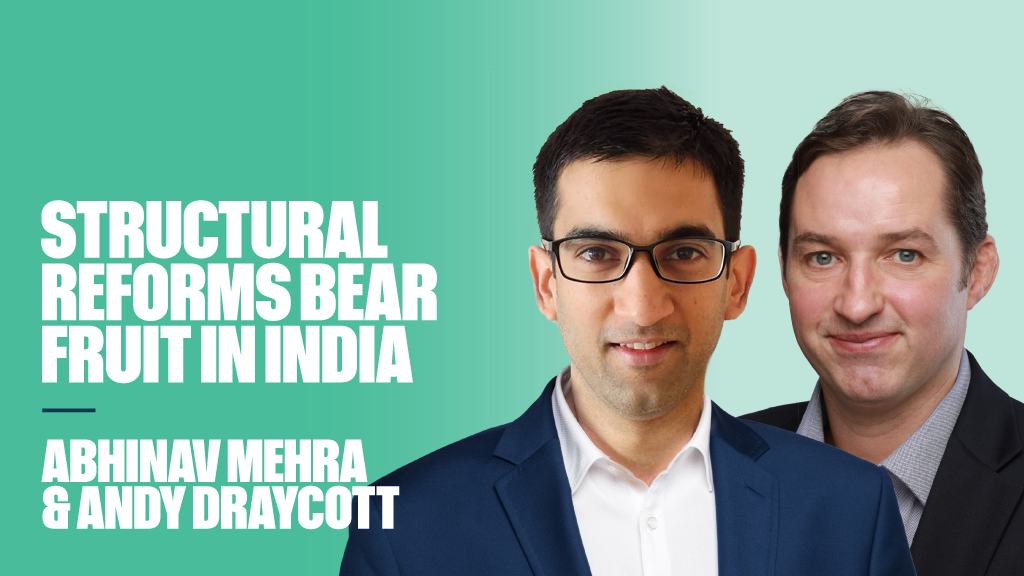Of the FTSE World Index stocks that yield over 3%, the share attributable to emerging market companies has grown from 9.9% in 1995 to 23.4% in 2011. We expect this trend, illustrated in the pie chart below, to continue.
Emerging markets offer a wide range of investment opportunities, with investors focused on equity income attracted to companies showing an increasing commitment to dividends. The search for equity income in emerging markets differs little from that in the developed world. Indeed, a focus on those companies boasting strong cashflows, stable balance sheets and the ability to sustain dividend payments goes beyond the developing/developed world divide.
However, there are marked differences in the composition of the domestic markets of different economies and as a result, their attractiveness to equity income investors.
Mutual appreciation
The size of a country’s pensions industry is a useful yardstick when judging its suitability for equity income investors, and tends to have real significance for domestic equity markets. Where there is a strong and significant base of institutional investors, company management teams can be more heavily scrutinised, with greater focus on their capital allocation activity.
This has positive implications for standards of management and governance in general. From an equity income perspective, when companies have committed to a dividend policy, cash is more likely to be returned to shareholders rather than remaining idle on the balance sheet or being used for activities such as mergers and acquisitions, which may prove destructive of value.
For example, one of the reasons we remain cautious about investing in Russian equities is the small size of the assets under management of the country’s pensions industry. At around $55bn, the industry’s total AUM amounts to less than 5% of GDP. Contrastingly, the equivalent AUM for Brazil is $308bn, which represents a contribution of nearly 15% to the country’s GDP.
Brazil is also well positioned to benefit from a youthful population and a growing middle class with increasing disposable incomes. We are especially interested in the development of infrastructure across the country, in particular with regard to transportation ahead of the World Cup in 2014 and the Rio Olympics in 2016.
Furthermore, Brazilian companies listed on the local exchange, BM&FBovespa, are required to maintain a minimum 25% dividend pay-out ratio, leading to an established dividend culture among domestic corporates.
State intervention, however, remains a concern for company management teams.
Brazil’s President Dilma Rousseff recently announced cuts to electricity tariffs in an effort to reduce energy costs and the adverse effects of inflation on households, causing real damage to valuations and having possible negative implications in terms of dividend sustainability. The Brazilian utilities sector suffered a significant decline in market capitalisation following the announcement of tariff cuts, which are expected to markedly reduce the sector’s revenues.
Brazil, along with much of South America, is an area where we see plenty of investment opportunities, but risks remain.
BRICs and mortar
Beyond the BRIC economies, there are many investment opportunities for equity income investors in the regions and countries of Latin America, Southeast Asia and the African continent.
For emerging market securities, it is important to compare and contrast not only between companies from the same country or region but also to compare between countries and regions. Mexico is an interesting case in point: it is primarily a manufacturing and export-driven economy, unlike much of Latin America, which is heavily reliant on commodities. Mexican wage inflation has been subdued, setting the country apart from many of its emerging market peers, particularly China, where wage inflation has become a serious concern. This has resulted in Mexico becoming a competitive and popular outsourcing location for global manufacturers, aided by its strong transport links with the US.
In 2011 L’Oreal announced plans to invest $50m in a new 30,000m2 hair colour facility, its largest facility of this kind, in Mexico while other global brands such as Unilever, Nissan and Honda have also made similar moves.
For many investors with a long-term horizon, equity income ticks plenty of boxes, especially against the backdrop of low interest rates and weak global economic growth. Dividends alone do not constitute the basis for an investment case. However, given the growth momentum relative to developed economies enjoyed by emerging markets, and the potential for rising dividend payments, we believe the outlook for 2013 is encouraging.
While risks remain, the dividend culture in emerging markets continues to expand, and the opportunities for growth and income should increase.











